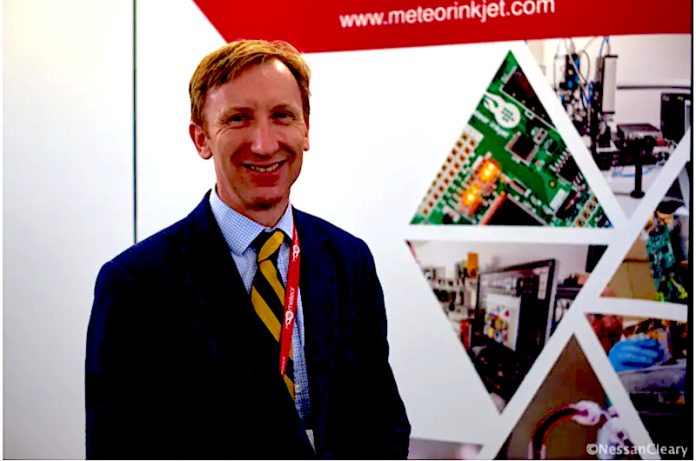Meteor is best known for developing drive electronics to support most of the inkjet printheads that are available. As more developers take advantage of inkjet for additive manufacturing, so Meteor has developed additional technology to support this. The most common way to use inkjet in additive manufacturing is through binder jetting, which is essentially jetting a fluid adhesive to bind the powdered material together to form the desired object.
In this case, Meteor has created a new ShellPro technology that offers step-function savings in the energy and materials used when binder jetting by exploiting the greyscale capability found in many inkjet printheads for jetting droplets of different sizes.
Binder jet 3D printing often requires the use of multiple structural constituents with different material densities. This includes a shell to form the external surface of an object. This outer shell is typically made up of higher density material than that used in the interior of the object in order to give higher strength. The ShellPro technology takes the pain out of creating this shell.
Innovation for additive manufacturing print systems
Ken Hillier, Meteor’s director of North America and the patent’s primary inventor, explains, “This innovation offers the potential for additive manufacturing print systems to use as much as 50% less binder fluid, reduce the energy needed for curing and create 3D objects faster, all without sacrificing quality.”
Additionally, ShellPro can automatically reduce shell thickness for small features on a printed object resulting in improved dimensional accuracy.
This development came about in response to a customer need and is mainly aimed at the sand casting industry. Clive Ayling, Meteor’s managing director, explained to me, “In the sand casting industry the total cost of ownership includes items such as the binder cost, the power used for curing, the head life, the up-time (affected by jetting effectiveness), the yield (also affected by jetting effectiveness) and the time-to-cure. Meteor is developing technology to address these issues because some of the levers available are within the Meteor datapath that sits between the 3D creation software (that produces the 3D image file) and the inkjet printhead.”
ShellPro is included as a standard feature in Meteor’s Met3D software, which includes a range of workflow features typically found in the Digital Front End for a graphics printer. Meteor is part of the Hybrid Software Group and this software is largely based around Global Graphics’ Harlequin RIP. Met3D provides a straightforward method to convert 3D CAD files such as STL or OBJ to rasterized vector files that inkjet printers can understand.
Ayling adds, “Meteor continues to undertake basic research to find and develop ways to improve the functionality, cost, quality and reliability of the industrial inkjet printing process. We are delighted that this invention has been recognised with a US patent and are confident that our ongoing investment in technological innovation will directly benefit not only our OEM customers but also the industry.”
You can find further information from meteorinkjet.com.
















